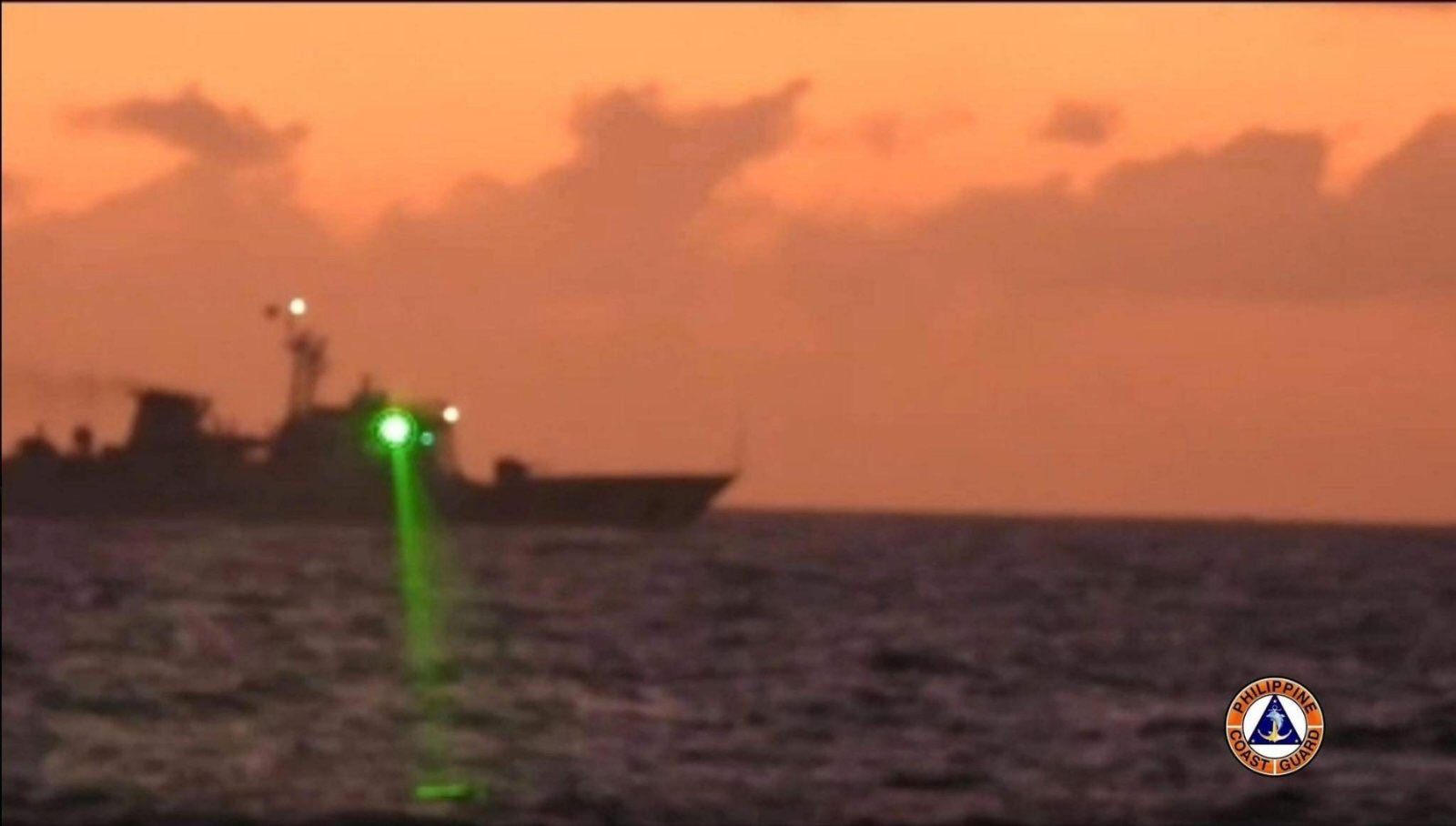SUMMARY
This is AI generated summarization, which may have errors. For context, always refer to the full article.

MANILA, Philippines – The Department of Foreign Affairs (DFA) on Thursday, February 16, confirmed that the Philippines and China made use of their newly implemented communication mechanism to tackle the Chinese Coast Guard’s recent deployment of a military-grade vessel against a Philippine Coast Guard ship in the West Philippine Sea.
DFA Spokesperon Ma. Teresita Daza made the statement in an interview with reporters on Thursday, adding that China’s foreign ministry initiated the call at 10:38 am Tuesday, February 14.
During the call, Daza said that the Chinese foreign ministry denied details of the incident shared by the PCG, particularly that the China Coast Guard Ship had a military-grade laser onboard.
“The Chinese foreign ministry’s focal point denied that the Chinese Coast Guard vessel involved in the incident had a military-grade laser onboard. He said that it only had a range finder that it uses to measure distance,” Daza said.
The Philippines, however, stood by details of the incident first disclosed by the PCG. “As far as the DFA is concerned, we have no reason to doubt the Philippine Coast Guard’s account of the incident,” Daza said.
The establishment of a direct communication mechanism on maritime issues was an outcome of President Ferdinand Marcos Jr.’s state visit to China in early January.
In creating the additional channel, Manila and Beijing had envisioned the new communication mechanism to complement other bilateral forms of communication by facilitating dialogue on more urgent issues. The communication line was also aimed at managing tensions in relation to the two countries’ maritime dispute.
Observing ‘good faith’
For the DFA, the first use of its new communication mechanism with China ironed out in real-time, details of how the countries would operate the communication channel.
Prior to the incident, the DFA and Chinese foreign ministry had been working on assigning focal persons for the mechanism, as well as finalizing details of how each side would communicate with one another.
“Now that has happened,” Daza sad. “There are focal persons identified by both sides…then also the agreement to what number will be used.”
It also offered an opportunity to define what exactly would be considered an urgent matter that would merit the use of the communication mechanism.
Alongside this, the first use of the communication mechanism also highlighted the need for both countries to anchor conversations in facts, Daza said.
“We appreciate that there is another form of communication but we hope that future communications, whether its done through regular diplomatic channels or this communication mechanism would be grounded on facts and done in good faith and with the goal of effectively managing disagreements between our two countries,” she said.
Daza added: “If we do not deal with facts and if it is not done in good faith and if we do not share the same sentiment to managing the disagreement…. What is the value of it?”
‘Disappointing’
China’s use of a military-grade laser against the BRP Malapascua is the latest incident to raise tensions in the volatile waterway. The incident prompted Marcos to summon Chinese Ambassador to the Philippines Huang Xilian – a rare move that indicated the gravity of China’s actions against the Philippines.
Despite this, China has continued to deny the PCG’s account. Instead, Chinese foreign ministry spokesperson Wang Wenbin said the CCG ship used a “hand-held laser speed detector and hand-held greenlight pointer” to “measure the distance and speed of the Philippine vessel and signal directions to ensure navigation safety.”
“The Philippine side’s allegation does not reflect the truth,” Wang said.
During its call with the DFA last February 14, China also said that its CCG ship “only had a range finder that it uses to measure distance.”
The Philippines kept its position that China’s actions were “disturbing and disappointing,” especially after Macros’ state visit to China.
Citing details of the call, Daza said the Philippine’s point person told China: “While we agree that we should continue working together, we hope that the Chinese side would reciprocate our efforts and refrain from committing actions that do not in any way, contribute positively to our relations.” – Rappler.com
Add a comment
How does this make you feel?










There are no comments yet. Add your comment to start the conversation.